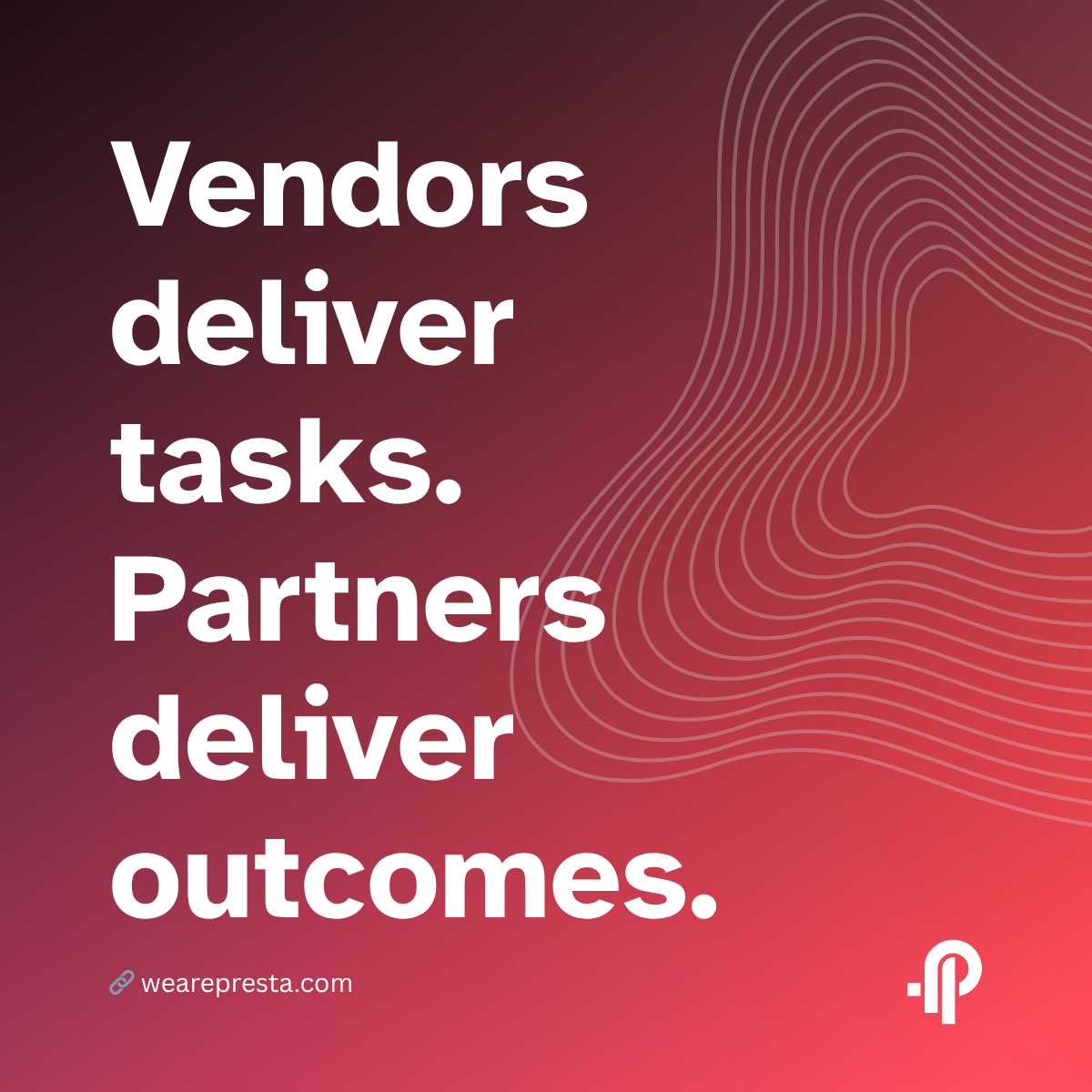Vendors deliver tasks. Partners deliver outcomes.
In every industry, there’s a subtle but crucial difference between those who work for you and those who work with you.
That’s the difference between a completed to-do list and real business value.
In times when the market changes day by day, organizations aren’t just looking for suppliers to get the job done – they’re looking for partners who understand their context, share their goals, and contribute to real outcomes.

1. Reliability
Reliability is the foundation of every lasting collaboration. A vendor completes what they’re told – and that’s where the job ends. A partner, however, takes responsibility for the outcome. They understand that a project doesn’t end with the last task, but begins with its use in the real environment. A reliable partner doesn’t run away from challenges, doesn’t make excuses, and doesn’t change direction every few weeks. Their value is seen in consistency – in the quality, accuracy, and sustainability of the delivered solution. In business, as in life, trust isn’t built with words but through repeated, reliable behavior.
2. Transparency
Transparency is what differentiates collaboration from control. A vendor informs – a partner communicates. A partner doesn’t hide risks, scope changes, or unexpected challenges; they present them openly and on time. Such honesty not only strengthens trust but also speeds up better decision-making. Transparency also means shared accountability – both sides should know where they stand. When nothing is hidden and everything is spoken clearly, tension decreases and the need for micromanagement disappears. In the long run, that’s the only way collaboration survives.
3. Business Focus
A technically perfect project can still be a business failure if it doesn’t solve the real problem. That’s why a partner doesn’t think only about functionality but about purpose – why this is being done and what outcome we want to achieve. A partner looks at the bigger picture: how technology affects sales, operational efficiency, customer experience, and profitability. They know true success comes when a solution drives business change – not just when it meets specifications. Business focus means thinking in terms of performance, not just tasks – because every decision, line of code, or visual detail impacts the business result.
4. Proactivity and Long-Term Thinking
A vendor waits for instructions. A partner anticipates needs. They think several steps ahead, ask questions others don’t ask, and bring ideas even when no one requests them. That’s why a true partner often becomes an extension of the team, not just an external executor. Long-term thinking also means not chasing quick wins at the expense of stability. They choose solutions that withstand shifts in the market, technology, and business priorities. Instead of “putting out fires,” a partner plans – because they know value isn’t measured by the first results, but by lasting impact.
5. Shared Responsibility
Finally, a partnership means both sides share risk and responsibility. In such a relationship, there is no “client vs. vendor” – only a shared goal. When one’s success equals the other’s, the line between “their” and “our” work disappears. That’s when true collaboration begins.
Conclusion
In a world where everyone is fast, but few truly understand, partners are the ones who make the difference. Vendors deliver tasks. Partners create outcomes that transform businesses. And that’s what makes the difference in the long run – between a short-term contract and lasting trust.

